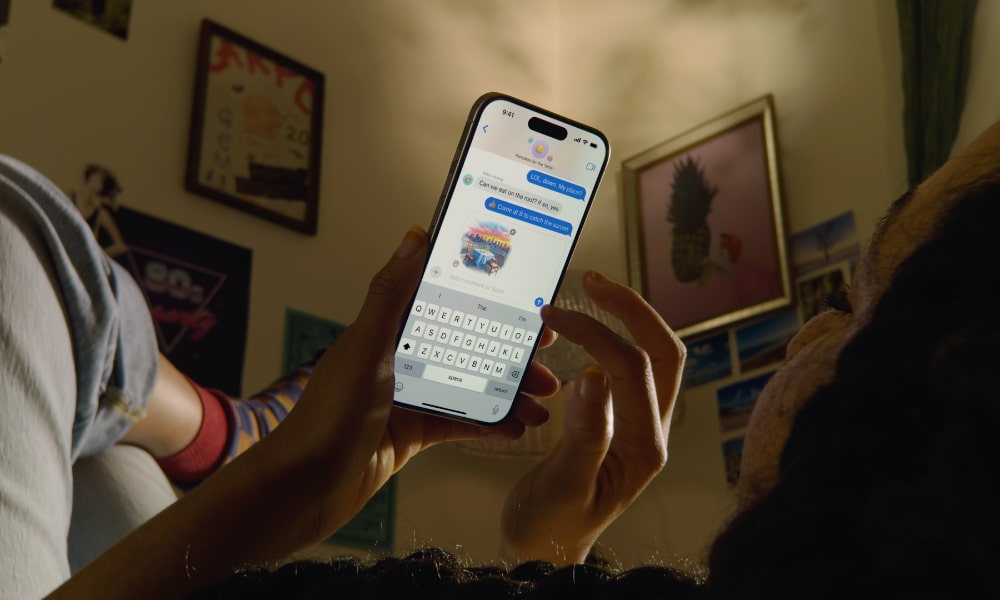Here’s Why Apple Intelligence Will Require an iPhone 15 Pro

Toggle Dark Mode
Even before Apple took the virtual stage at last week’s Worldwide Developers Conference, we’d heard rumors that its powerful new AI features would be limited to only the most cutting-edge iPhone models. So, it wasn’t a big surprise when that turned out to be true.
Nevertheless, Apple’s decision to limit Apple Intelligence to the iPhone 15 Pro (and iPhone 15 Pro Max) and later models was disappointing to many folks. Some also found it confusing that Macs and iPads from three years ago were included, while the iPhone 15 and iPhone 15 Plus models that Apple released less than a year ago were not.
While a more cynical take is that this is a ploy to sell more iPhones, the most logical explanation is the sheer memory requirements of AI technologies. Apple is running all of its large language models (LLM) on-device for maximum performance and privacy, and as the word “large” implies, these models are RAM-hungry beasties.
After all, if the M1 chip in Apple’s 2020 MacBook Air and 2021 iPad Pro can run Apple Intelligence, it seems unusual that the A14 Bionic chip released around the same time wouldn’t be able to handle the same tasks. After all, the A14 Bionic and M1 feature the same 16-core Neural Engine capable of the same 11 trillion operations per second (TOPS).
However, where older iPhone models differ from the 2020 MacBook Air is in core RAM. The iPhone 12 models that packed in the A14 Bionic have 4GB or 6GB of RAM, a trend that’s continued through to last year’s iPhone 15 and iPhone 15 Plus. The iPhone 15 Pro and iPhone 15 Pro Max may have a substantially more powerful A17 Pro chip, but they have something that’s even more important for running LLMs — they’re the only iPhone models Apple has ever released with 8GB of RAM inside.
Apple Explains…
Now, Apple has offered some additional clarification. In response to a question by Daring Fireball’s John Gruber during his Talk Show Live at WWDC 2024 session, Apple’s Senior VP of Machine Learning and AI, John Giannandrea, said that it came down to ensuring that Apple Intelligence would deliver the kind of performance people would expect, which simply wasn’t feasible on older devices.
So these models, when you run them at run times, it’s called inference, and the inference of large language models is incredibly computationally expensive. And so it’s a combination of bandwidth in the device, it’s the size of the ANE [Apple Neural Engine], it’s the oomph in the device to actually do these models fast enough to be useful. You could, in theory, run these models on a very old device, but it would be so slow that it would not be useful. John Giannandrea
When Gruber facetiously asked the trio of Apple Senior VPs if it was a plan to sell more iPhones, Greg Jozwiak laughed and said that if that were the case, the company would have limited Apple Intelligence to only newer iPads and Macs as well. Craig Federighi then jumped in and said that Apple always tries to support as many older devices as possible. However, when it came to the iPhone, they had to build a new one specifically to handle Apple Intelligence: the iPhone 15 Pro.
Our first move in any way is to figure out how we can bring features back as far as possible. I think you’ve seen that time and time again with us. What JG [John Giannandrea] says is right here; this is what it takes — this is the hardware it takes. I mean, it’s a pretty extraordinary thing to run models of this power on an iPhone, and it turned out it took us building this iPhone. Craig Federighi
The pair were a bit more vague when Gruber pointedly asked if RAM were a factor, saying only that it’s one aspect of the bigger picture.
It’s many dimensions of the system. RAM is one of the pieces of the total. The A17 Pro is not the first A chip that’s got a neural engine, but it’s got a much bigger neural engine than the chip that came before.Craig Federighi and John Giannandrea
It’s unclear whether that was simply PR-speak to emphasize the more powerful A17 Pro chip or if there are other subtle differences that set it apart from the M-series chips. Either way, it’s clear that the A17 Pro and its 8GB of RAM are the minimum requirements to handle Apple Intelligence on an iPhone, and it’s unlikely Apple will surprise us by bringing it to older iPhone models the way it did with Stage Display on the iPad two years ago.







